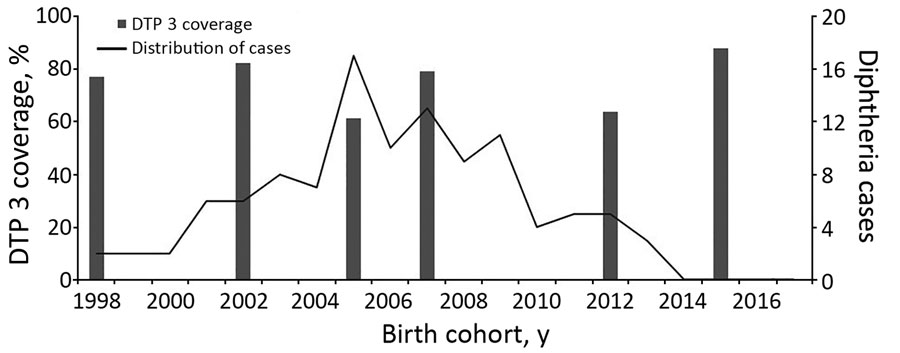Volume 27, Number 3—March 2021
Dispatch
Addressing Reemergence of Diphtheria among Adolescents through Program Integration in India
Figure 2

Figure 2. Distribution of DTP3 immunization coverage during 1998–2016 and hypothetical distribution of 2017 cases according to birth cohorts in Telangana, India. Data sources for DTP-3 coverage are National Family Health Surveys (NFHS; 5) and District Level Household & Facility Surveys (DLHS; 6), conducted by the government of India. Data source for coverage in 1998 was NFHS-2, in 2005 was NFHS-3, and in 2015 was NFHS-4. Data source for coverage in 2002 was DLHS-2, in 2007 was DLHS-3, and in 2012 was DLHS-4. DTP3, diphtheria-tetanus-pertussis.
Page created: December 22, 2020
Page updated: February 21, 2021
Page reviewed: February 21, 2021
The conclusions, findings, and opinions expressed by authors contributing to this journal do not necessarily reflect the official position of the U.S. Department of Health and Human Services, the Public Health Service, the Centers for Disease Control and Prevention, or the authors' affiliated institutions. Use of trade names is for identification only and does not imply endorsement by any of the groups named above.